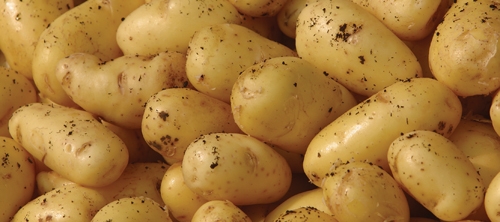
Features
Chemicals
Weed Control
First into the furrow
Growers have been waiting for another option for managing rhizoctonia and now one is available. DuPont is releasing Vertisan this spring and the bonus is it contains new chemistry within Group 7 products. It also offers management of early blight as a foliar spray, giving growers another option for early blight.
June 17, 2013 By Rosalie I. Tennison
 Growers have been waiting for another option for managing rhizoctonia and now one is available. DuPont is releasing Vertisan this spring and the bonus is it contains new chemistry within Group 7 products. It also offers management of early blight as a foliar spray
Growers have been waiting for another option for managing rhizoctonia and now one is available. DuPont is releasing Vertisan this spring and the bonus is it contains new chemistry within Group 7 products. It also offers management of early blight as a foliar spray“DuPont has developed the next generation of Group 7 herbicides with this product,” says Sylvain Legault of DuPont. “This is new chemistry for rhizoctonia management with low risk of resistance, but growers should still use common sense and be vigilant when using any product.”
Vertisan is a succinate dehydrogenase inhibitor (SDHI fungicide) with the active ingredient of penthiopyrad, according to Legault. It works by blocking respiration at complex II. In furrow, it will work to prevent the development of rhizoctonia by systemically moving through tissue, which is an action unique to SDHI class fungicides. It works similarly when used as a foliar application to minimize the effects of early blight.
Gilles Hamel, a researcher in Quebec, used Vertisan in furrow on a small plot of Norland potatoes in 2011. “The symptoms of rhizoctonia were low in the plot,” he says, compared to what was observed in the control plots or those that had applications of competitive products. His full report on his use of Vertisan was not available for this article, but he believes the control looked very promising.
Vertisan compares favourably with other rhizoctonia management products in the same class, but the difference in chemistry gives growers another option for fungicide rotation. “Vertisan is very potent against the pathogen that causes rhizoctonia – not all SDHI fungicides are – which is what makes it so unique,” adds Legault. “It also offers excellent crop safety, which is something growers want.” He says Vertisan is showing control on both black and silver scurf, but further testing is being done before adding these to the label. DuPont is also actively pursuing the effectiveness of using penthiopyrad as a seed treatment.
Growers with rhizoctonia and early blight problems can look forward to trying a new chemistry during the 2012 growing season. So far, the initial results from test plots in Ontario, the Maritimes, and Quebec suggest this new option for control of these diseases will be a welcome addition to growers’ disease management toolbox.
Print this page